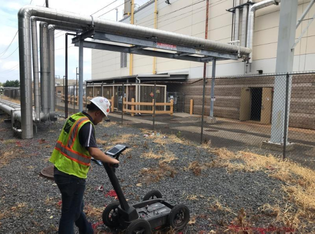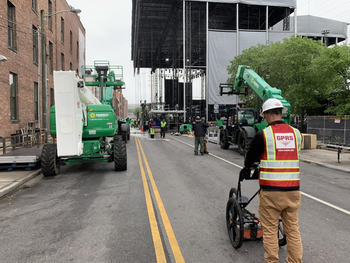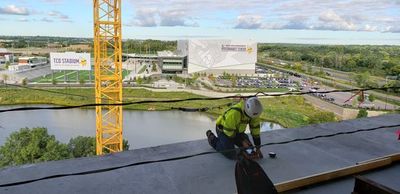What is GPR?
Everything you need to know about ground penetrating radar, including who to call for service

How does GPR work?
Ground Penetrating Radar equipment use antennas to transmit and receive ultra-high radio frequency waves to determine the location and depth of buried objects. These radio signals are transmitted into the ground until they reach an underground utility or other object. When the radio waves hit a foreign object, they are reflected back to the GPR transmitter, where visual data that can be recorded, interpreted and manipulated is displayed on a screen. As more data is being displayed, technicians can analyze the transmitted results giving them the ability to see the size of objects and the depths at which they are located. The data from these signals can also be saved if further review is needed.
What does GPR do?
GPR can map out all private utilities or other hidden objects by displaying a difference in material composition. For example, PVC pipe has a different composition than the surrounding soil. GPR can also identify voids and excavations that have been filled in, because of the difference in compositions than their surrounding soil. However, GPR cannot determine the actual materials that the system is imaging.
What are the limitations of GPR?
GPR can generally locate the positioning of buried objects in their exact locations. However, the type of soil and moisture content can affect the speed and accuracy of depth measurements. As noted before, GPR radio waves also cannot distinguish the difference or makeup of materials. For example, a GPR reading cannot tell the difference between a water line and an electrical line, only their approximate depth and location.
Why is GPR necessary?
Ground Penetrating Radar is advanced technology used to get the most accurate locations of underground utilities and other subsurface objects. The only way to find a more accurate location of utilities or other hidden subsurface objects, would be to dig up the ground and physically expose the utilities, which can be untimely and much more expensive. Using GPR to locate utilities before digging is not only safer, but can save can save hundreds of thousands, and even millions of dollars in labor and materials. We recognize contractors are faced with crucial decisions on a daily basis, but it’s the unknown that can cause your simple excavating project to become very risky or even delayed. There are countless subsurface hazards that need to be accounted for prior to excavation, core drilling and saw cutting. Choosing not to schedule GPR services can cause devastating results to your project or company, causing compounding effects that can impact job site safety, project timelines and job site financials, all of which could throw the entire project into turmoil.
Ground Penetrating Radar Services from GPRS

Private Utility locating
Underground private utility locating is critical to any construction project where subsurface excavation is planned. Failure to accurately locate and avoid these utility lines can result in expensive damage, costly delays and potential injury to your excavation team. GPRS has a variety of state-of-the-art tools, offering you a comprehensive range of reporting options from a basic field sketch to a full-blown AutoCAD report, which will pinpoint buried electrical, water, gas, communication, sewer and storm drain lines. Our report will provide you with a permanent utilities location record to prevent unnecessary damage, safety risks or dylays to your project. Learn More>>

Concrete scanning
Once a concrete floor, wall or ceiling is in place, it’s impossible to know exactly where or what objects are inside the concrete without specialty equipment. Our well-trained, skilled and experienced project managers can help crews navigate through a slab without damaging any structural elements such as conduits, rebar, post-tension cables, etc. We are accustomed to responding quickly to any service request, especially when your need for concrete scanning is a last-minute discovery. Lean More>>
